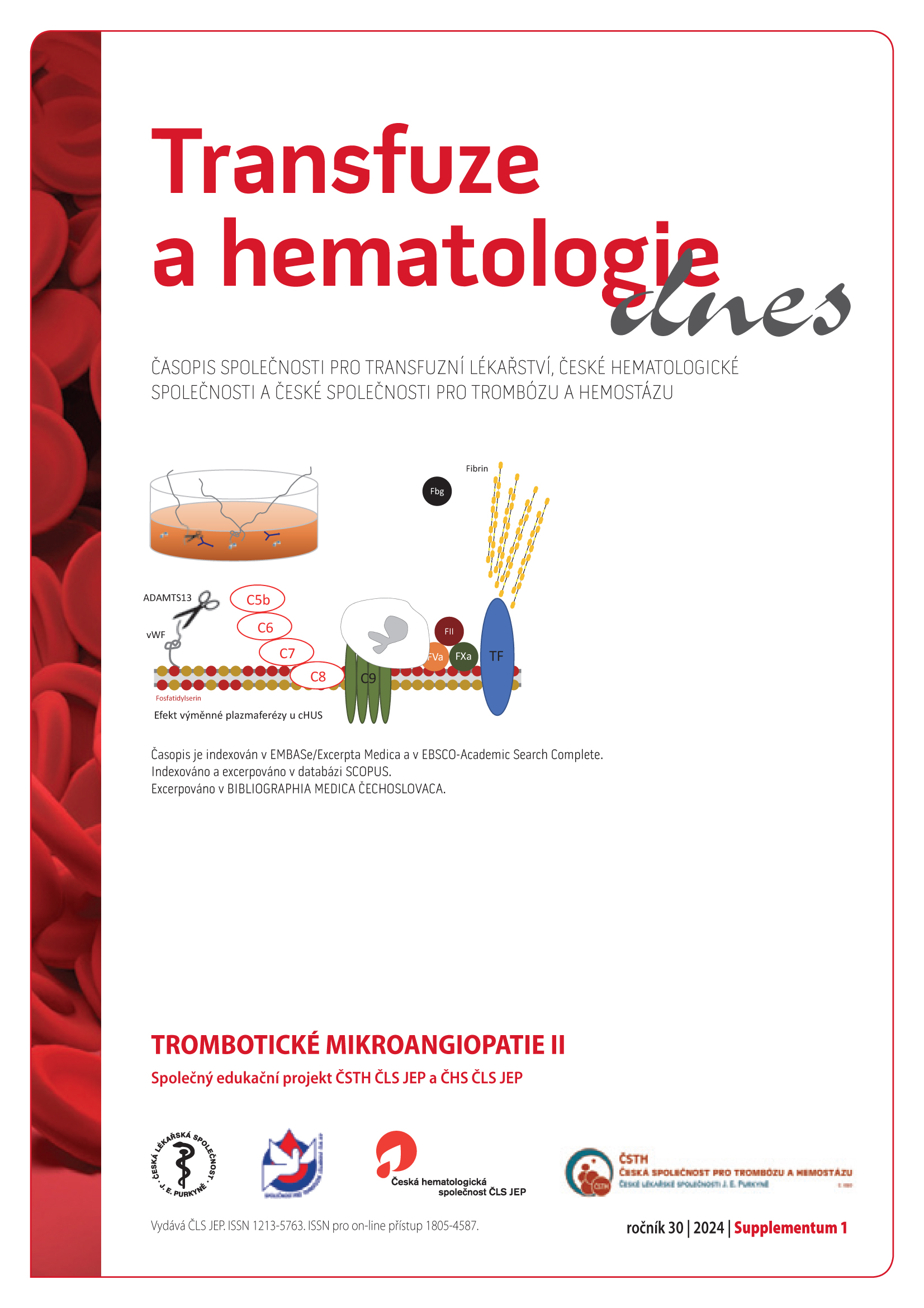Haemolytic-uremic syndrome associated with infection
Abstract
Haemolytic-uraemic syndrome (HUS) is a form of thrombotic microangiopathy. It is characterised by acute kidney injury, non-immune Coombs negative haemolytic anaemia and thrombocytopenia. Typical HUS is a serious disease that develops as a consequence of diarrhoea caused by Shiga toxin-producing Escherichia coli (STEC) strains, which can be detected in a cultured patient´s stool. The disease primarily affects pre-school children. The infection occurs mostly through ingestion of STEC-contaminated food. The clinical course is dominated by abdominal pains often accompanied by cramps and diarrhoea without or with blood, icterus, and acute kidney injury demonstrated by haematuria, proteinuria, and elevated kidney function parameters. At the same time, bleeding into the skin of various extent occurs. The CNS involvement may develop as a life-threatening complication. It is important to timely recognize and treat the patient in an intensive care unit with the possibility of haemodialysis.
Key words: haemolytic-uraemic syndrome, thrombotic microangiopathy, acute kidney injury, children, Escherichia coli, Shiga toxin


